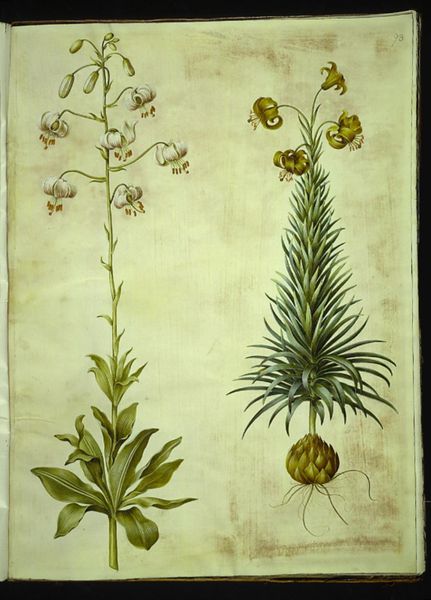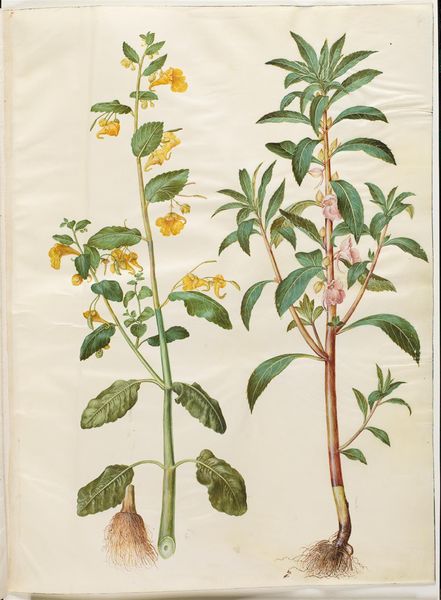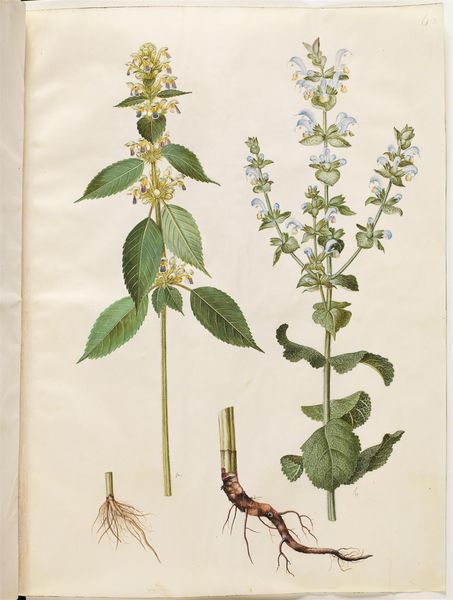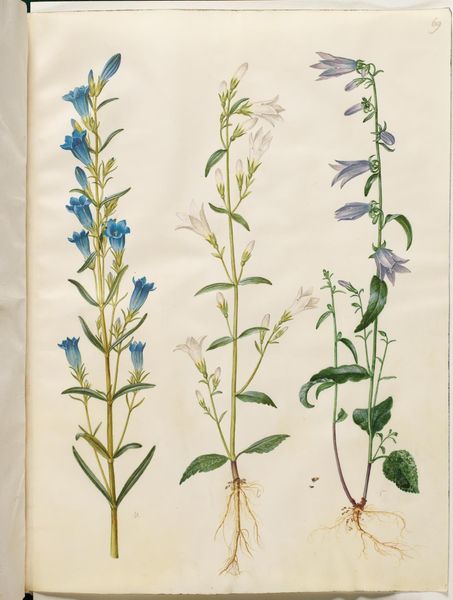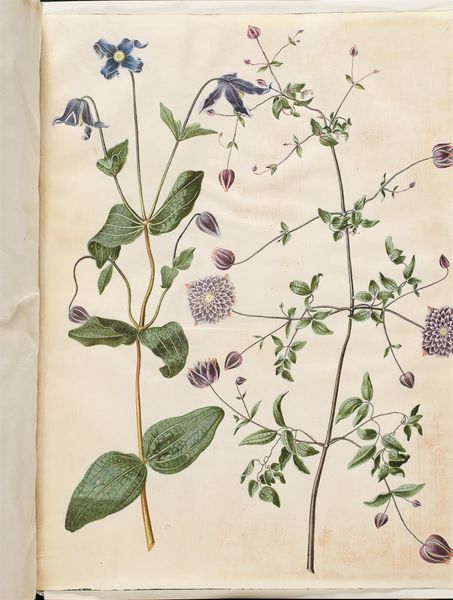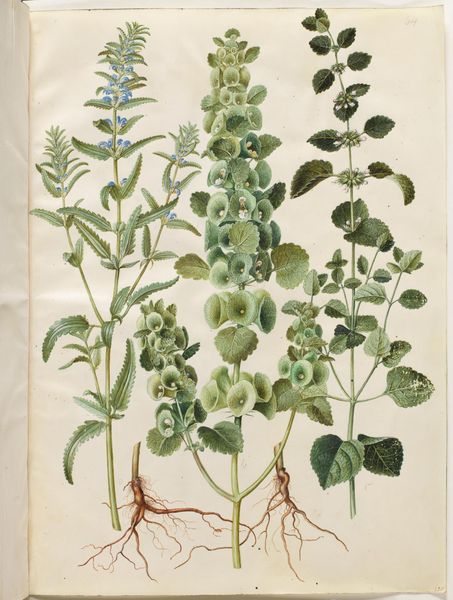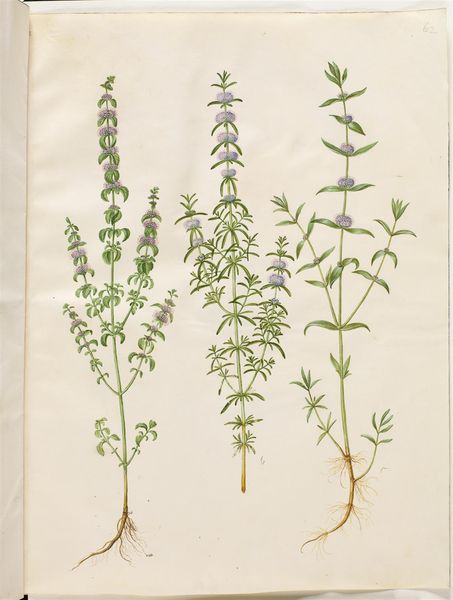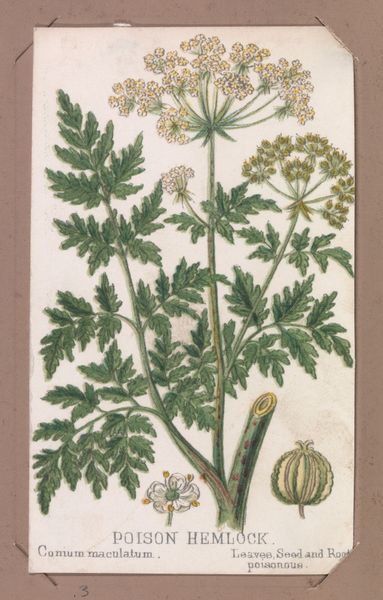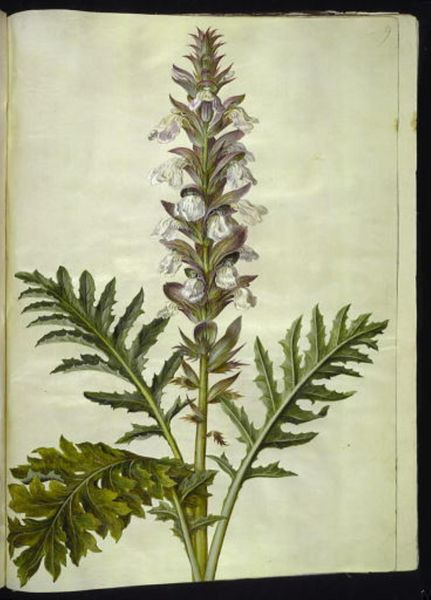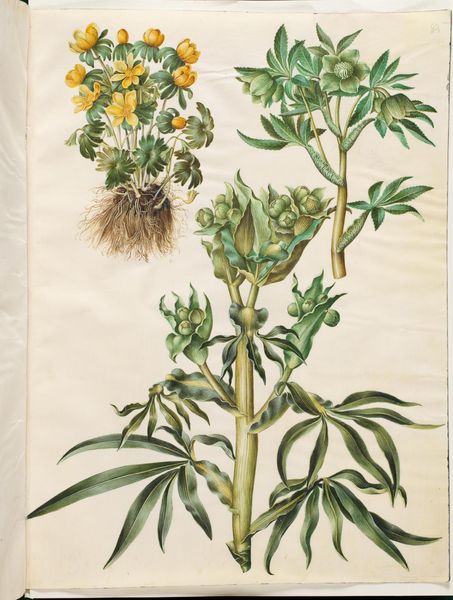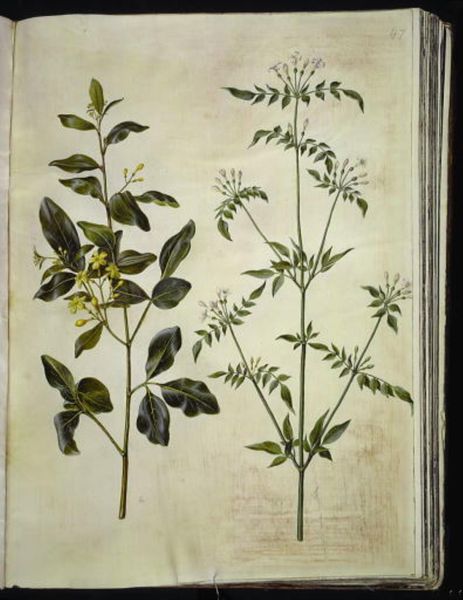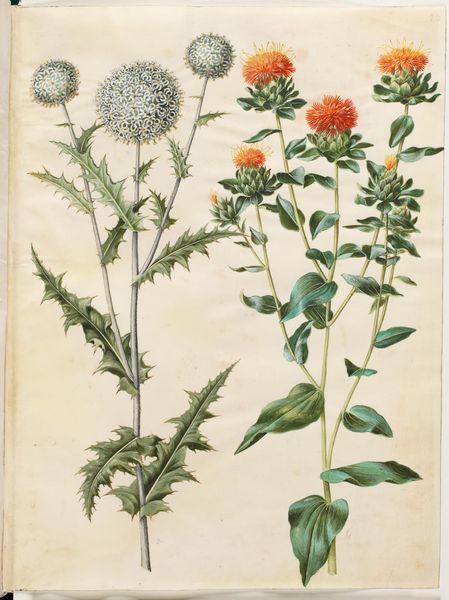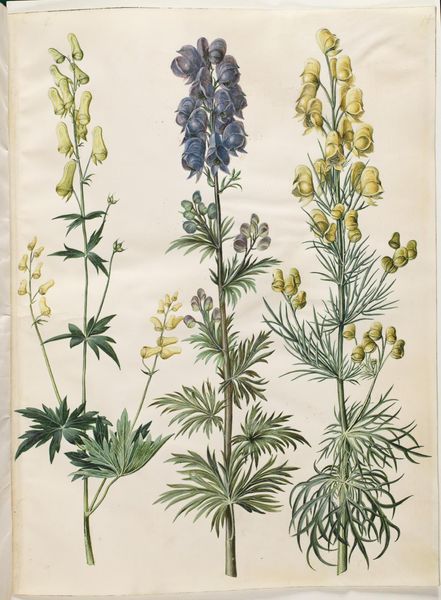
Kksgb2950/65 Urtica pilulifera (romersk nælde); Urtica urens (liden nælde); Urtica dioica (stor nælde) 1649 - 1659
0:00
0:00
drawing, gouache, watercolor
#
drawing
#
water colours
#
gouache
#
11_renaissance
#
watercolor
#
watercolour illustration
#
northern-renaissance
#
botanical art
#
watercolor
Dimensions: 505 mm (height) x 385 mm (width) (bladmaal)
Editor: This watercolour and gouache work, dating from 1649-1659, is by Hans Simon Holtzbecker, and it depicts three types of nettles. There's a beautiful detail in the roots, stems, leaves. They're so carefully observed! It’s quite striking, the plants feel almost imposing. What do you see in this piece? Curator: I see a quiet form of rebellion. Holtzbecker, during the Northern Renaissance, chooses to immortalize nettles, plants often dismissed as weeds, things to be eradicated. Why elevate them to the realm of art? I believe it's a subtle commentary on value. What dictates which life forms are deemed worthy of our attention and, by extension, our respect? Editor: So, you're suggesting that it's not just a botanical study, but a statement? Curator: Absolutely. Consider the period. There was enormous social stratification, a rigid hierarchy. By celebrating these often-ignored plants, Holtzbecker, perhaps unconsciously, challenges this hierarchy. He seems to say, "Look closely, there is beauty and complexity in the seemingly insignificant." How does his rendering of traditionally 'undesirable' plants inform conversations on class and societal expectations? Editor: I never thought about botanical art in that way. I suppose it speaks to ideas of marginalisation. Curator: Precisely. Art can unveil societal assumptions. The botanical drawing becomes a potent tool. What if, today, we re-examined which art institutions collect, and whom they deem valuable for study? What nettles are being overlooked now? Editor: This definitely shifts my perception. I came in thinking it was simply a detailed nature study, but it could be that Holtzbecker’s study of nature could become an invitation to challenge perspectives, on nature and perhaps social structures too! Curator: Indeed. Let's carry that thought with us as we look at other artworks here today!
Comments
No comments
Be the first to comment and join the conversation on the ultimate creative platform.
